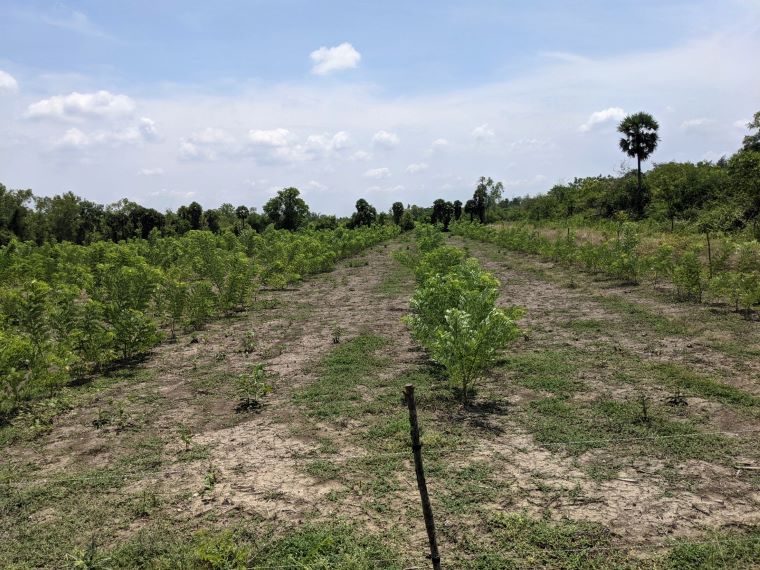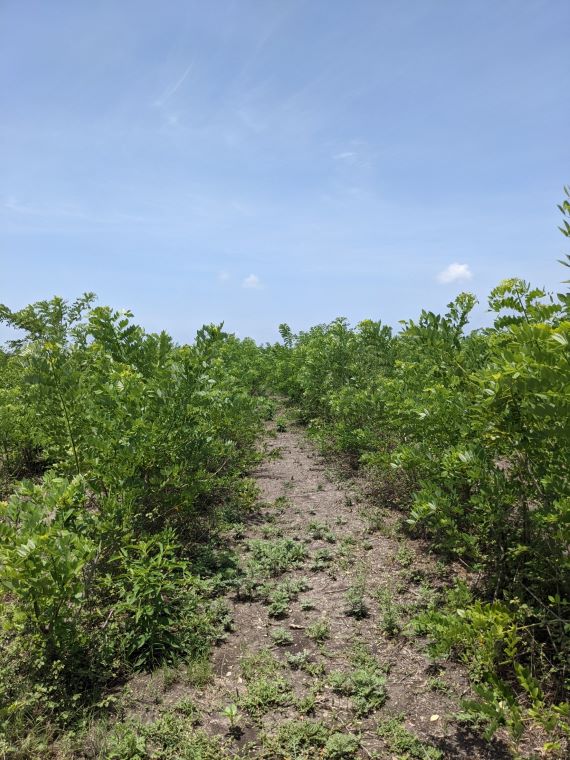This week we started to work on our Gliricidea nursery. This is a yearly ritual where we prepare a nursery of 5000 or more Gliricidea seedlings to plant on the lands which are not easy to control.



Ambika and Sengani filling nursery packets with soil. Young Gliricidea widely planted.
Mature Gliricidea row planted.
Once grown, (by September/October), the seedlings are planted in straight rows in the field so we can mechanize the work of cutting and shredding. Most of the plantations are used to prepare shredded material to add to the compost. Annapurna still buys every year many loads of compost in the bioregion, and we want to bring that amount down over time by creating more biomass. Some of the shredded material is used for mulching our guava orchard.
Gliricidea Sepium is a medium-size leguminous tree which can be cut back periodically and will grow back thereafter. The leaves are rich in nitrogen (protein) and good for fodder and enriching soil/compost. It grows extremely fast when conditions are good.
The farm has planted 15-20 acres over the years. Some plantations are wide spaced and we can plant crops in between; some fields are more narrow and can only be used for creating organic matter.
Gliricidea is an important plant in our farming system and we give it due attention. Organic matter management is a very important part of an organic farm system.
Generally deer, stray cows/goats are not fond of it and pigs are only a real problem in the first year after planting when they uproot young seedlings. In this way Annapurna can still make productive use of parts of the farm which otherwise are ruled by wild life and stray animals.
[…] years, Annapurna has been cultivating the most outlying pieces (15-20 acres) of the land under dryland gliricidia plantations to produce fodder and biomass. These gliricidia were originally planted as a dryland crop to […]
[…] the last week of October, We finished transplanting gliricidia in the far northwest of Annapurna plot 375. This comes after good rainfall overnight that finally […]